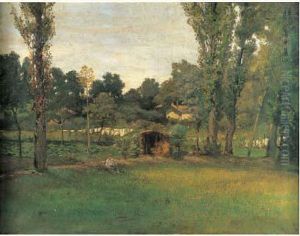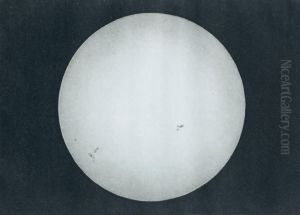Leon Foucault Paintings
Jean Bernard Léon Foucault was not primarily known as an artist but rather as a French physicist and a pivotal figure in the world of science during the 19th century. Born in Paris on September 18, 1819, he initially embarked on medical studies but soon shifted his focus to physical sciences due to his distaste for the practices of surgery at the time and his hypersensitivity to the suffering of patients.
Foucault's contributions to physics are numerous and diverse, ranging from measurements of the speed of light to the invention of the gyroscope. However, his most famous achievement is the demonstration of the Earth's rotation through the Foucault pendulum experiment in 1851. This experiment provided simple, direct evidence of Earth's rotation, which was previously understood through more indirect means. He suspended a pendulum with a long wire from the dome of the Panthéon in Paris, and as the pendulum swung, the Earth rotated underneath it, causing the plane of the pendulum's swing to rotate relative to the ground. This was a groundbreaking proof at the time and made Foucault a household name.
Foucault also made significant contributions to the fields of astronomy and optics. He improved the mirrors of telescopes, developed an early form of the speedometer, and was the first to measure the speed of light accurately on Earth using rotating mirrors. His experiments were not only scientific triumphs but also had a visual and conceptual elegance that intersected with the realms of art and public spectacle. The Foucault pendulum, in particular, can be seen as a kind of kinetic sculpture and a precursor to later works of art that would engage with scientific themes and mechanical motion.
Despite his scientific prowess, Foucault suffered from multiple sclerosis throughout his later years, which progressively impaired his physical abilities. He was made a member of the Royal Society of London and awarded the Copley Medal, among other honors for his work. Léon Foucault died in Paris on February 11, 1868, after a long illness. His legacy is preserved not only in scientific literature and the continued display of Foucault pendulums around the world but also in the Foucault crater on the Moon, named in his honor.

